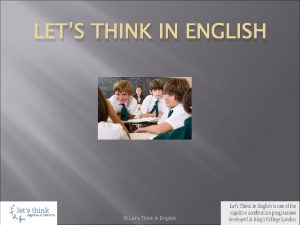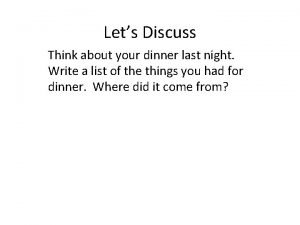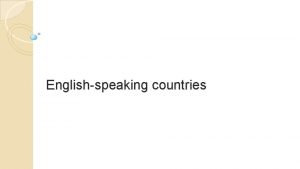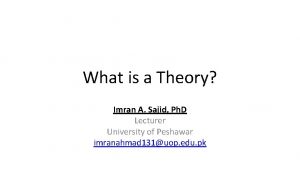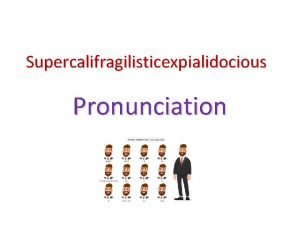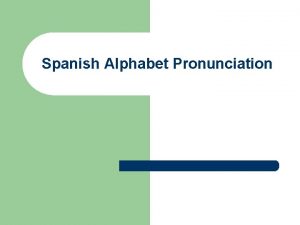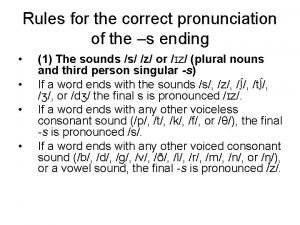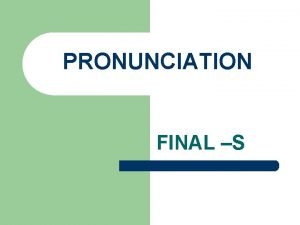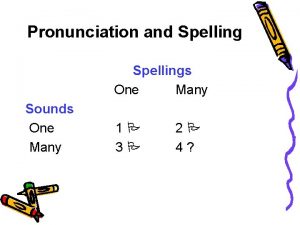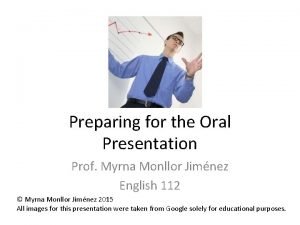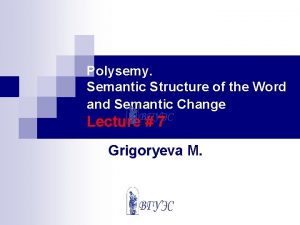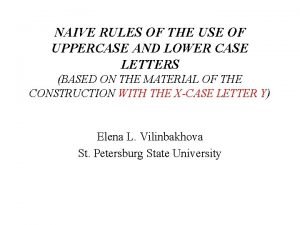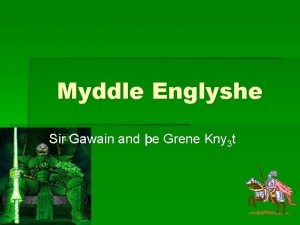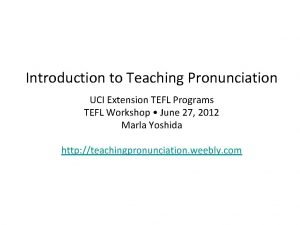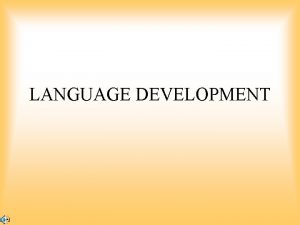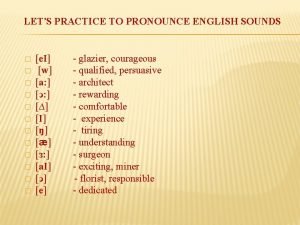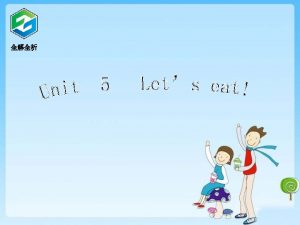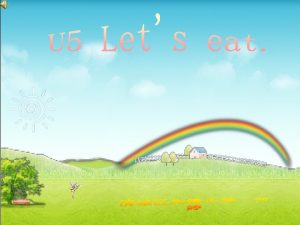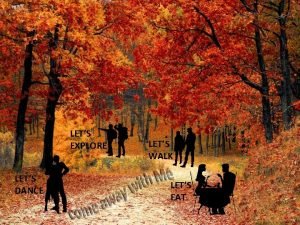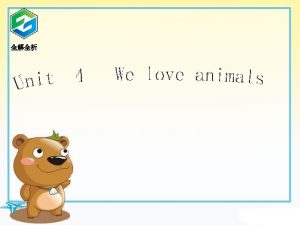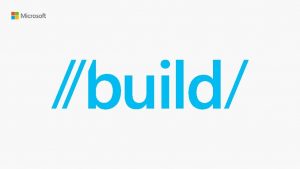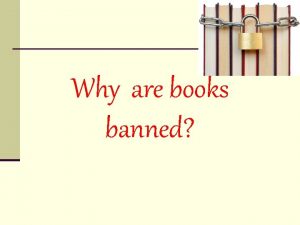Lets Pronounce English Introduction TH Ch Non native



















- Slides: 19

Lets Pronounce English Introduction TH Ch Non- native pronunciation of English SH B&P

Introduction Overcome Common Pronunciation Problems: There are three problems with pronunciation that ESL students in China and other countries often have: problems pronouncing groups of consonants, problems pronouncing certain vowels, and problems with the rhythm of English.

Non- native pronunciation of English Non-native pronunciations of English result from the common linguistic phenomenon in which non-native users of any language tend to carry the intonation, phonological processes, and pronunciation rules from their mother tongue into their English speech. They may also create innovative pronunciations for English sounds not found in the speaker's first language.

What is wrong in pronouncing “TH” sound? There are two TH sounds, one hard and one soft. Many students pronounce the hard TH like Z and the soft TH like S. This is not too bad, but can sometimes make language hard to understand. With both Z and S, you use both your upper teeth and lower teeth to produce sound. With TH, just use your tongue in place of your lower teeth.

How you pronounce “TH” sound correctly? There actually two different "th" sounds in English, but they are very similar. Both "th" sounds are made putting your tongue between your teeth so that the tip of your tongue is touching the tips of your top teeth. Now you can make a "th" sound by blowing are through your teeth.

Using a mirror You can check to see if you are doing it correctly by using a mirror. You should be able to see your tongue when you say words such as "this", "the", and "that". If cannot see your tongue, yo u may be putting your tongue behind your top teeth instead of touching the tips of your top teeth

Lets practice “TH” Beginning Middle End Thanks Method Mouth

Pronouncing “CH” The "ch" sound like in "chip" is a combination of /t/ as in “tip” and “sh” like in “ship” To make this sound, put your tongue on the roof of your mouth, right behind your teeth, then move your tongue back behind your teeth until you are making the "sh“ sound.

Lets practice “CH” Beginning Middle End Chair Mature Church

Pronouncing “SH” The consonant sound in "ship" is made by putting your teeth together, with your top teeth in from of your back teeth, and putting your tongue in the middle of your mouth, scrunched up towards the back of your mouth

“SH” sound When we make a "sh" sound, we do not use our voice; the sound is quiet. Put your hand on your throat and make the sound in "ship". You should not feel any movement in your throat.

Lets practice “SH” Beginning Middle End Shy option British

Pronouncing /B/ & /p/ sounds The consonant sounds in "bat" and "pat" are both made by putting our two lips together and then opening them to release a small puff of air.

What is the difference between them? The difference is not what we do with our mouths, but what we do with our voice. When we make a /p/ sound, we do not use our voice; the sound is quiet. Put your hand on your throat and make the sound /p/. You should not feel any movement in your throat.

/b/ sound when we make a /b/ sound, we do use our voice. Put your hand on your throat and make the /b/ sound. Can you feel the vibrations? put your hand in front of your mouth and make the /b/ sound (the voiced sound). Feel only a little puff of air.

Lets practice /b/ Beginning Middle End Basket Cambered Lamb

/P/ sound /p/(the voiceless sound) makes a bigger puff of air. Put your hand in front of your mouth and make the /p/ sound. Feel the big puff of air.

Lets practice /p/ Beginning Middle End Professor Compare Cup

The End
 Types of english
Types of english Let's think in english
Let's think in english Let's discuss this
Let's discuss this English native countries
English native countries Recueil arc-en-ciel pdf
Recueil arc-en-ciel pdf Pronounce s es
Pronounce s es Sciophytes pronounce
Sciophytes pronounce How is van gogh pronounced
How is van gogh pronounced They say i say gerald graff
They say i say gerald graff Pronunciation supercalifragilisticexpialidocious
Pronunciation supercalifragilisticexpialidocious The alphabet pronunciation in spanish
The alphabet pronunciation in spanish Verbs end with s
Verbs end with s Qui tam pronounce
Qui tam pronounce The final s pronunciation
The final s pronunciation Baths pronunciation
Baths pronunciation How to pronounce myrna
How to pronounce myrna Metonymy ex
Metonymy ex How to pronounce naive bayes
How to pronounce naive bayes Gawain pronunciation
Gawain pronunciation Uci tefl
Uci tefl

